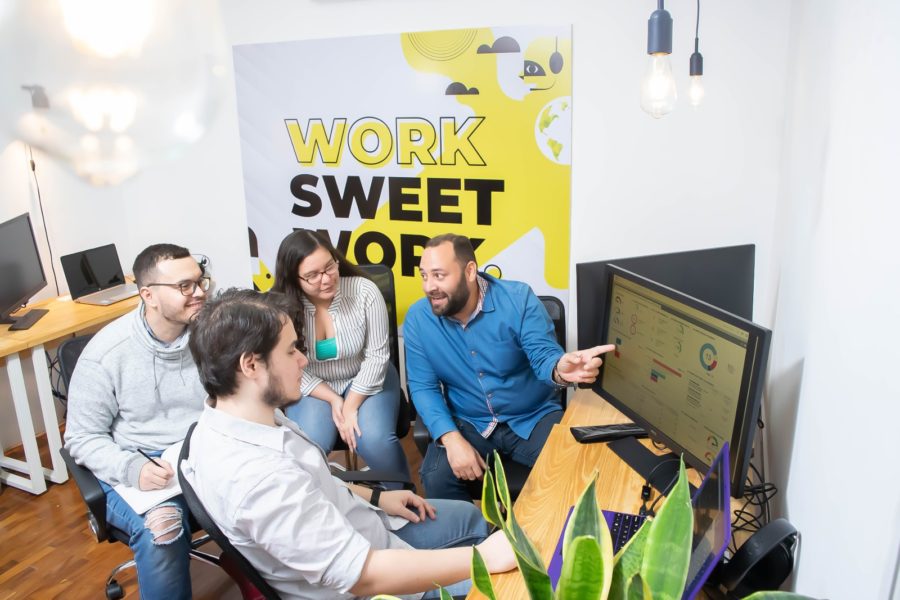Whatever the issue, having a positive attitude will help, whether it be to overcome the difficulties of working life or to attract better things with our energies.
The “positive attitude” topic has many possible approaches, but this time, I want to specifically discuss how to cultivate a positive attitude at work and how important this is for productivity and mental health. We all want to be good at what we do, but we should never do it at the cost of our health.
So, within the framework of mindfulness and mental health’s importance in recent years, it’s important to start integrating these habits and postures into one of the most stressful spaces for modern human beings: work.
Yes, it’s inevitable to feel a certain discouragement or tension when working, even more so when you don’t feel incredibly connected or passionate about what you do. Still, you will be surprised to discover all the difference that makes having a more positive approach to situations that take more effort.
Let’s get started.
What is a Positive Attitude?

We all know, even empirically, what having a positive attitude is about, but it never hurts to review a concept when it comes to learning it. We often think we know something, and we only have one image by association wandering in our minds.
Although it is a very abstract concept, we understand that a positive attitude makes the difference when taking advantage of life’s opportunities or facing adversity.
For example, having a positive attitude is like cleaning the lenses of life’s glasses, allowing yourself to see things in your mind more clearly, comfortably, and optimistically. My myopic companions will understand precisely the kind of bliss I am describing.
A positive attitude has to do with managing attention towards more positive aspects and being oriented towards the “bright side” of things rather than ruminating on self-defeating and harmful thoughts and attitudes for productivity and mental health.
Sure, by this, I don’t mean toxic positivity, where people don’t leave room in their minds to experience any emotion other than conventional joy or comfort. Since this is not positive, if not quite the opposite, we humans must feel. We come equipped with a lot of sensitivity to react to stimuli, and our emotions and feelings make us understand what our experience is like in the world around us, who we are, what we want, etc.
It’s essential to know the difference.
Having a positive attitude at work is not about turning a blind eye to problems and only focusing on the good things. It is about educating your mind so that it knows how to take those difficulties patiently and calmly and propose solutions for them, as well as staying motivated and grateful, just as in the comfortable and positive moments.
Let me explain how.
Build Good Working Relationships

You might be surprised that this is the first recommendation on the list, maybe not. But the truth is that as semi-gregarious beings, humans tend to feel more secure and at ease when we are grouped and to feel nervous or intimidated when not.
For this reason, having good relationships with your colleagues is a great motivator not only to go to the office or the remote work platform but also to have a work environment that encourages creativity and proactivity, which makes it easier for you to feel committed to what you do.
Get Enough Rest
It’s proven that overexerting yourself at work and trying too hard is negative. Both for the job and for the worker. This pace will only result in burnout in the long run and, of course, a total loss of commitment and work motivation.
The more tired you are, the more irritable, impatient, and discouraged you will be, making it impossible to maintain a positive attitude even on the calmest of days.
You need to sleep the necessary hours and take healthy breaks between tasks so your mind can rest, your body can stretch, and you can get fresh air. Remember that the mind and body are much more connected than we usually believe, so it is essential to take care of ourselves, even if we start from the outside in.
Have an Optimistic Approach
Like all learning, it takes time and dedication to educate your mind to focus on the positive side of things before the negative, but still, you must reverse it and slowly bring your mind to this.
I know that it is much easier to say what than to do it, but the wonderful thing about our mind is that, many times, saying it has much more credit than we give it.
What do I mean by this? Well, that was how to begin to educate your mind to subtly have a more positive approach by expressing yourself in a more optimistic and solution-oriented way. For example, instead of saying, “I can’t do this,” try saying, “I’ll learn how to do it.” Rather than viewing challenges as terrifying and running from, view them as an opportunity to learn and gain more experience on some topic. You learn from everything wrong.
We recently published a post that specifically talks about this on our Instagram. Click here to see it.
Set Healthy Boundaries
Even if some of us enjoyed integrating all our responsibilities into a single routine, boundaries are always necessary. Separating personal life from work is highly recommended to have a good attitude at work.
It is not good to bring home problems to work or vice versa since, in both cases, people not directly involved are being affected by something for which they are not responsible.
The tensions are insurmountable. Healthy boundaries are vital to maintaining a positive work attitude.
Keep Learning
Knowledge, be it soft skills or hard skills, will help you create in every way and give you more layers to contribute to the job. Thus, it will help your self-esteem and notion of ability, which in turn will improve the quality of your job—all in a positive domino effect.

These were some recommendations that our members have worked on to keep the pace of work optimistically. I hope it has been helpful.
And remember, your mind is yours, and you can learn to direct it to work in your favor.
If you want to learn more about these topics, follow us on our Instagram and subscribe to our YouTube channel.
See more articles by Andrea Corona.






